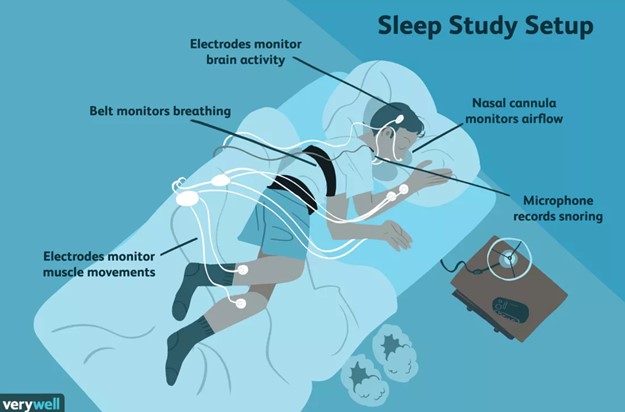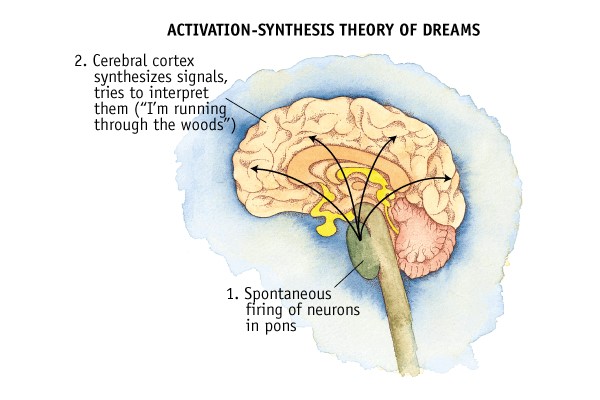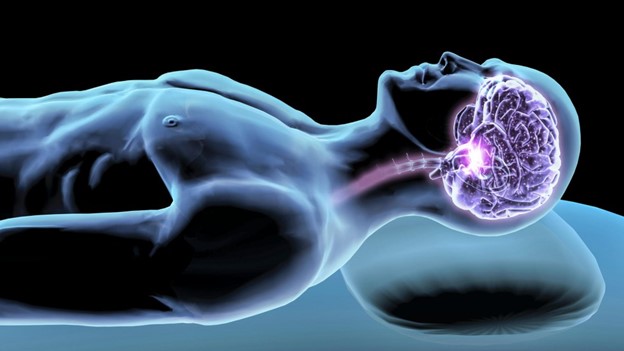Humankind has been fascinated by the phenomenon of “dreams” since the dawn of recorded history. One-third of their lives is roughly spent by people in their beds, sleeping and dreaming. Dreams are a universal experience that can be depicted as a condition of awareness characterized by cognitive, sensory and involuntary occurrences of emotions during certain stages of sleep. Throughout the recorded history, it has been a subject of religious, philosophical and scientific interest, though the purpose and content of dreams are still debatable and not fully understood. The scientific study of dreams is known as oneirology, that seeks the relationship between dreaming and existing knowledge about the brain functioning, along with the comprehension of how the brain functions during dreaming in accordance with memory shaping and mental disorders.
We Get Our Sleep in Different Phases of a Sleep Cycle
• Stage I: This stage, which forms 4-5% of the total sleep, comprises of light sleep with reduced muscle activity and slow eye movement.
• Stage II: Forming 45-55% of the total sleep, this stage encounters slower brain waves with episodic bursts of rapid waves called sleep spindles where eye movement completely stops.
• Stage III: Appearance of extremely gentle delta brain waves intermixed with smaller and faster waves accounting for 4-6% of total sleep.
• Stage IV: This stage in which almost exclusively delta waves are produced makes awaking of a person difficult, especially in stages III & IV, together called “deep sleep”. This forms 12-15% of total sleep and people generally take time to adjust and feel disoriented for several minutes if awakened during this phase.
• Stage V: Known as the rapid eye movement (REM), this stage experiences rapid, shallow and irregular breaths with eyes jerking swiftly in different directions and temporary paralysis of the limb muscles. Accounting for 20-25% of entire sleep time, people awakened during the REM sleep often describe illogical and bizarre tales. These are “dreams”.

What Role Does REM play?
Dreams predominantly occur in the rapid eye movement (REM) phase of sleep when the brain is in its most active state. The REM stage is otherwise called paradoxical sleep (PS) and sometimes also desynchronized sleep in the light of physiological likenesses to waking states, including fast, low-voltage desynchronized brain waves. Chemical and electrical activity controlling this stage appear to originate in the brain stem and is identified most notably by a plenitude of the neurotransmitter acetylcholine. It has been found that the REM is generated by a region of cells called “pons” located in the brain stem. Acetylcholine released from the pons travel all the way to thalamus, which transfers them to the cerebral cortex, the external layer of the brain, stimulating the areas responsible for thinking, learning and organizing information. The pons additionally imparts signals that shut off neurons in the spinal cord resulting in atonia i.e., temporary paralysis of the limbs. As the cortex is that region of the brain that deciphers and sorts out data from the surroundings during consciousness, researchers believe dreams are the attempts of the cerebral cortex to “discover meaning in the arbitrary signals that it receives during REM sleep”. Essentially, the cortex might be attempting to interpret these random signs, “making a story out of fragmented brain activity”.

Why Can’t We Mostly Remember Our Dreams?
Experts state that while the majority of us have between four to six dreams each night, we tend to forget most of them. Even on those fortunate days when we wake up with a memory of the dream still lingering in our mind, there is a decent possibility that in just a minute or two the memory will fade away inexplicably. That is because, according to a study in the journal Neuron in 2011, it is stated that not all regions of the brain go offline at the same time when we fall asleep. Researchers have found hippocampus, the structure critical for moving information from short-term memory into long-term memory, to be one of the last regions to go to sleep. Being the last to go to sleep, it can very well be the last to wake up too. According to Dr. Andrillon, sometimes people wake up with a dream in their short-term memory, but the brain is still not able to retain that memory since the hippocampus is not yet fully awake.
It is shown in a few data that during certain stages of sleep, the hippocampus sends information to the cortex but does not receive any. This unidirectional communication permits sending memories to the brain cortex from hippocampus for long-term storage, yet new data is not allowed to be registered by hippocampus. This explains why the memories of dreams are so fleeting and is the reason for the brain to need at least a couple of minutes to kick-start its memory encoding abilities upon awakening.
The Mystery of Lucid Dreaming!
Sometimes it happens that the dreamer realizes that they are dreaming even as they are asleep. What can be the science behind this enthralling phenomenon of consciousness? This experience is known as “lucid dreaming” and has caught the interest of various researchers. Normally, when we dream, we are not aware that we are dreaming, and the most far-fetched occasions, characters and conditions appear real to us. Lucid dreaming, which consists features of both dreaming and waking is a hybrid state of consciousness. Scientists have found out that lucid dreaming is accompanied by increased activities in the dorsolateral prefrontal cortex, the precuneus, the inferior parietal lobules, the bilateral frontopolar prefrontal cortex and the supramarginal gyrus. These are all the brain regions identified with higher cognitive functions, including working memory, planning, attentiveness and self-consciousness.
Certain anecdotal events, along with studies indicate that lucid dreaming has more in common with experiencing sleep paralysis than that of regular dreaming. The mind in sleep paralysis awakens to a certain degree, whereas the body is unable to move and stays asleep. Individuals have reported experiencing realistic hallucinations during this phase, as if the contents of the dream had “leaked” into reality.
Despite that the possibility of becoming better at lucid dreaming is certain, only limited aspects of their dreams can be controlled by lucid dreamers at once. Various features of lucid dreaming, including the brain mechanisms behind it remains a mystery till date. These open avenues for future research, which is yet to comprehend what exactly lucid dreams can accomplish for the dreamer and where do they exactly fit on the map of sleep experiences.

